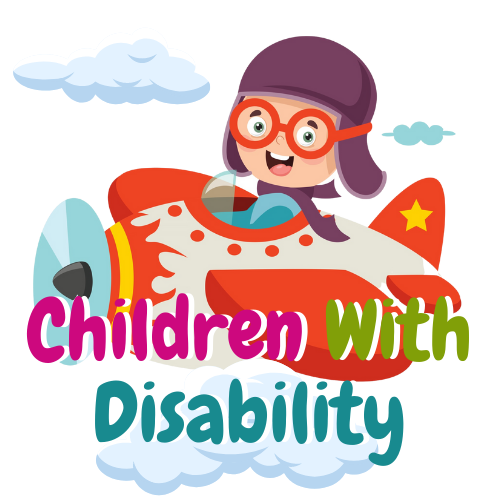frequently asked questions (FAQ) about disabled Children:
Children with Disability NZ Our mission is to make New Zealand the most disabled child friendly region in the world!

FAQs to provide better outcomes for disabled children in new zealand

Frequently Asked Questions (FAQ) :
Learning support when your child's at school...
- Encourage good study habits and organization.
- Communicate regularly with teachers.
- Support homework and extra reading.
- Provide a quiet and comfortable study space at home.
- Offer praise and positive reinforcement.
- Encourage participation in extracurricular activities.
- Limit distractions such as TV and video games.
- Ensure that your child gets enough sleep and exercise.
8 Important Tips For Working With A Special Needs Child...
- Be patient and understanding.
- Use clear and concise communication.
- Encourage independence.
- Use visual aids to help with understanding.
- Modify tasks as needed.
- Offer positive reinforcement.
- Be flexible and open to trying new approaches.
- Work collaboratively with parents and other professionals involved.
Provide better outcomes for disabled children in New Zealand?
2# Ensuring access to inclusive education: Disabled children should have access to inclusive education, where they are able to learn alongside their non-disabled peers. This can help them develop important social and emotional skills, as well as improve their academic performance.
3# Providing financial support: Families of disabled children may need financial support to help cover the costs of caring for their child, such as medical expenses and adaptations to their home.
4# Improving accessibility: New Zealand needs to continue to improve accessibility to public spaces, buildings, and transportation to ensure that disabled children and their families are able to fully participate in society.
5# Providing support for families: Families of disabled children often need support to help them cope with the challenges of caring for a disabled child. This can include respite care, counseling and support groups.
6# Building awareness and understanding: Raising awareness and understanding about disability within the community can help to break down barriers and promote inclusion for disabled children and their families.
Teaching Tips for Students with Special Needs...
- Differentiate instruction: Offer multiple ways to learn and demonstrate understanding.
- Use visual aids: Incorporate pictures, videos, and other visual materials to support learning.
- Break tasks into smaller steps: Simplify instructions and break down complex tasks into manageable steps.
- Use hands-on activities: Engage students through hands-on experiences that tap into their strengths.
- Provide positive reinforcement: Encourage and reward students for their efforts and achievements.
- Foster a supportive environment: Create a safe and inclusive environment that promotes belonging and respect.
- Utilize technology: Utilize assistive technology and other digital tools to support learning and meet individual needs.
- Encourage independence: Teach skills that promote independence and self-advocacy.
- Foster social skills: Provide opportunities for students to practice and develop social skills.
- Partner with families: Collaborate with families to ensure success and support for students with special needs.
The Child Disability Allowance...
The Child Disability Allowance (CDA) in New Zealand is a weekly payment provided by the government to families with children who have a significant and ongoing disability. The allowance is designed to help cover the extra costs of caring for a child with a disability. To be eligible for the CDA, the child must have a disability that affects their ability to carry out everyday activities, and the disability must be expected to last for at least 6 months.
What abilities will my disabled child have...
It depends on the specific disability, however some common abilities of children with disabilities may include:
- Communication and self-expression
- Cognition and learning
- Physical abilities and mobility
- Social interaction and relationships
- Self-care and independent living skills
It is important to understand that every child is unique and their abilities can vary greatly, even within the same disability. With the right support and accommodations, many children with disabilities can lead fulfilling and productive lives.
What makes a good life for disabled children and young people...
A good life for disabled children and young people includes access to appropriate education, healthcare, and support services, as well as opportunities for socialization and inclusion in their community. It also includes having their rights and needs respected, and being able to live as independently as possible.
A supportive and understanding family and community can also play a vital role in ensuring a good quality of life for disabled children and young people.
Why Provide Accessible Play...
Accessible play refers to creating environments and opportunities for play that are inclusive and welcoming for children of all abilities. Some benefits of accessible play include:
-
Promoting inclusion and socialization: Children with disabilities often have limited opportunities to interact and play with their peers. Accessible play promotes inclusion and allows children of all abilities to socialize and form friendships.
-
Developing skills: Children with disabilities often have specific needs and goals for therapy and skill development. Accessible play can provide opportunities for children to practice and develop skills in a fun and engaging way.
-
Improving self-esteem: Children with disabilities may feel excluded or different from their peers. Accessible play can help children feel included and valued, which can improve their self-esteem and self-worth.
-
Encouraging independence: Many children with disabilities rely on assistive devices or require assistance with daily activities. Accessible play can provide opportunities for children to practice independence and self-care in a safe and supportive environment.
-
Improving overall well-being: Accessible play can improve children's physical, emotional, and cognitive well-being and can have a positive impact on their overall quality of life.
Can my disabled child succeed in life...
Yes, a disabled child can succeed in life. With proper support, education, and resources, individuals with disabilities have the ability to achieve their goals and live fulfilling lives. Encouragement, love, and patience can also play a big role in a disabled child's success.
Caring for children with disabilities Parenting Master Class...
Caring for children with disabilities can be a challenging but rewarding experience for parents. Here are some tips for parenting a child with disabilities:
-
Learn about the disability: Gain a thorough understanding of the child's condition, treatments, and resources available.
-
Build a support network: Connect with other families who have children with similar disabilities, as well as healthcare professionals.
-
Advocate for your child: Ensure your child receives appropriate services and support, both at home and in school.
-
Foster independence: Encourage your child to develop skills and pursue interests that promote self-sufficiency.
-
Maintain a positive outlook: Maintaining a positive attitude can positively impact both you and your child, and help you navigate challenges.
-
Take care of yourself: Caring for a child with disabilities can be physically and emotionally taxing, so it is important to practice self-care and seek support as needed.
Curb cut design and why it matters...
Curb cut design matters because it directly affects the accessibility and safety of individuals with mobility impairments, such as those using wheelchairs, scooters, or walkers. A well-designed curb cut should have:
- A gradual slope for easy navigation
- Adequate width to accommodate wheelchairs or other mobility devices
- Textured surface to provide traction
- Proper drainage to avoid puddles or slippery surfaces
- Clearly visible markings and contrasting color for easy identification.
Poorly designed curb cuts can create obstacles, be hazardous, and negatively impact the independence and mobility of individuals with disabilities.
Do well designed curb cuts assist wheelchair accessibility...
Yes, well designed curb cuts can greatly assist with wheelchair accessibility by providing a smooth transition from the sidewalk to the street level.
Helping a child with a disability with everyday activities...
-
Encourage independence: Teach the child to do things for themselves, such as dressing and eating, with assistance as needed.
-
Use assistive technology: Devices such as adapted utensils, communication devices, and mobility aids can help the child participate in daily activities.
-
Adapt the environment: Remove physical barriers, provide visual cues, and make other accommodations to create a safe and accessible environment.
-
Encourage socialization: Encourage the child to interact with others and participate in social activities with their peers.
-
Involve in leisure activities: Find hobbies and interests the child enjoys, such as arts and crafts, sports, or playing music, to help them feel included and engaged.
-
Provide support: Be patient, understanding, and offer help as needed, while also empowering the child to do as much as they can on their own.
Helping children with learning disabilities...
-
Early identification and assessment: Identifying learning disabilities early on can help children receive support and interventions earlier.
-
Differentiated Instruction: Tailoring teaching methods to suit individual learning styles can be effective.
-
Use of Assistive Technology: Assistive technology such as text-to-speech, speech-to-text, and specialized software can help children with learning disabilities.
-
Collaboration between Parents and Teachers: Teachers and parents should work together to create individualized education plans and to monitor progress.
-
Building self-esteem: Encouraging and praising children's strengths can help build self-esteem and confidence.
-
Accommodations and modifications: Providing accommodations and modifications in testing and in the classroom can help level the playing field for children with learning disabilities.
-
Encouraging Independence: Teach children with learning disabilities strategies to become independent learners.
-
Remediation: Specific intervention programs and therapies can help children improve their skills and overcome learning difficulties.
How to help disabled child in school...
-
Accommodations: Provide the necessary accommodations to help the child learn and participate in school activities, such as adaptive equipment, extra time for tests, or a quiet place to take exams.
-
Individualized Education Plan (IEP): Work with the school to develop an IEP that outlines the child's specific needs and how they will be met in the classroom.
-
Inclusive education: Encourage the school to adopt inclusive education practices, where children with disabilities are integrated into general education classrooms and receive support from special education teachers.
-
Positive attitude: Promote a positive attitude towards disability and encourage classmates to be inclusive and supportive.
-
Collaboration: Collaborate with the school and other service providers to ensure that the child is receiving the support they need both in and outside of the classroom.
-
Advocate: Advocate for the child's rights and needs, and ensure that they are receiving a quality education that meets their individual needs.
Job choices for a young disabled person in New Zealand...
Here are some job options for a young disabled person in New Zealand:
- Remote work or freelancing
- Customer service or support
- Data entry or administrative assistant
- Sales or marketing
- IT or technical support
- Retail or hospitality
- Social media management
- Tutoring or teaching
- Gardening or landscaping
- Cleaning or maintenance
Note: Accommodations and support for disabled individuals may vary depending on the employer and the individual's needs. It's always best to check with the employer to ensure a suitable work environment.
PERCEPTION of disability
“Disability is a matter of perception. If you can do just one thing well, you’re needed by someone.”
-Glen McMillan.